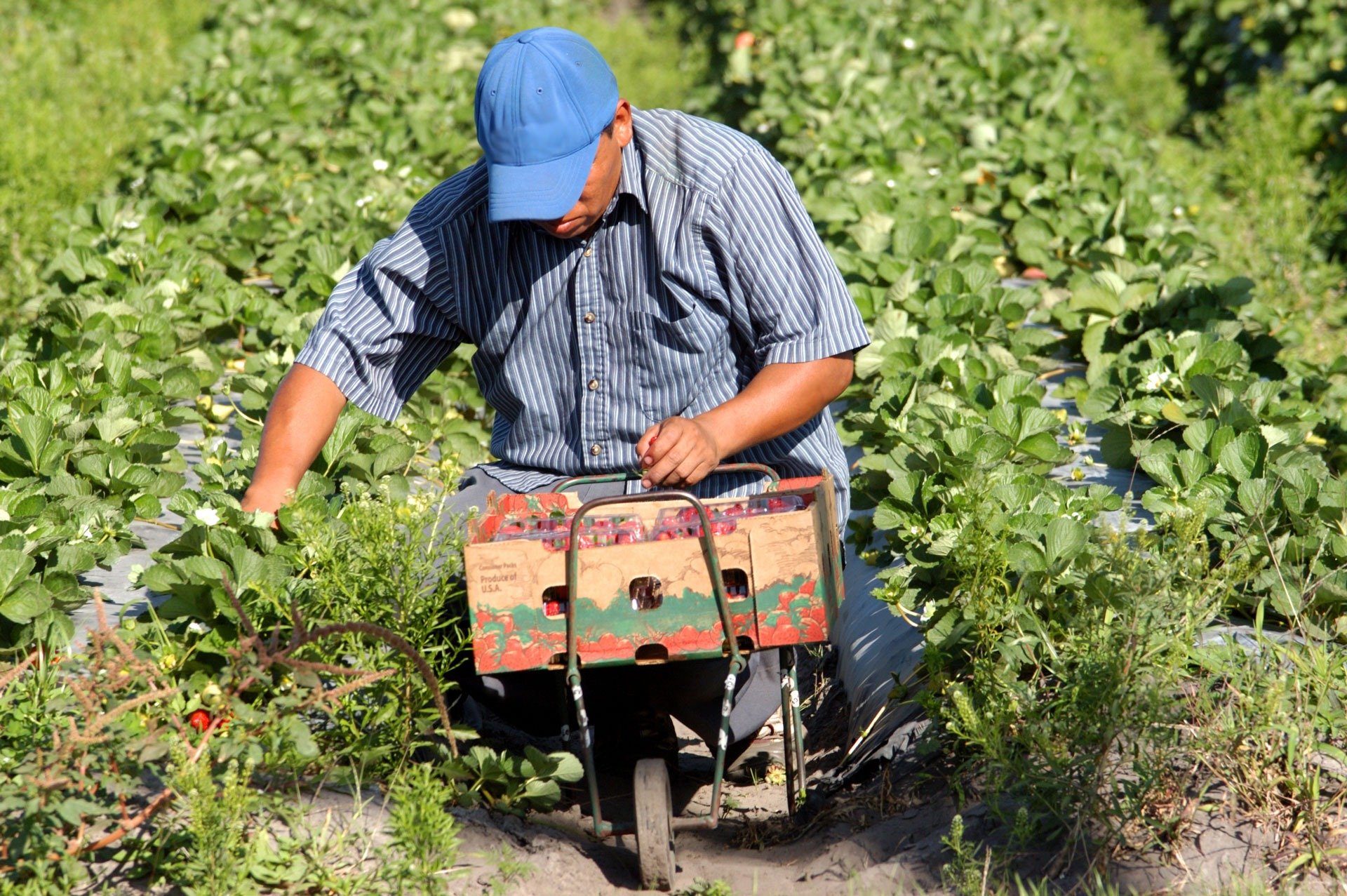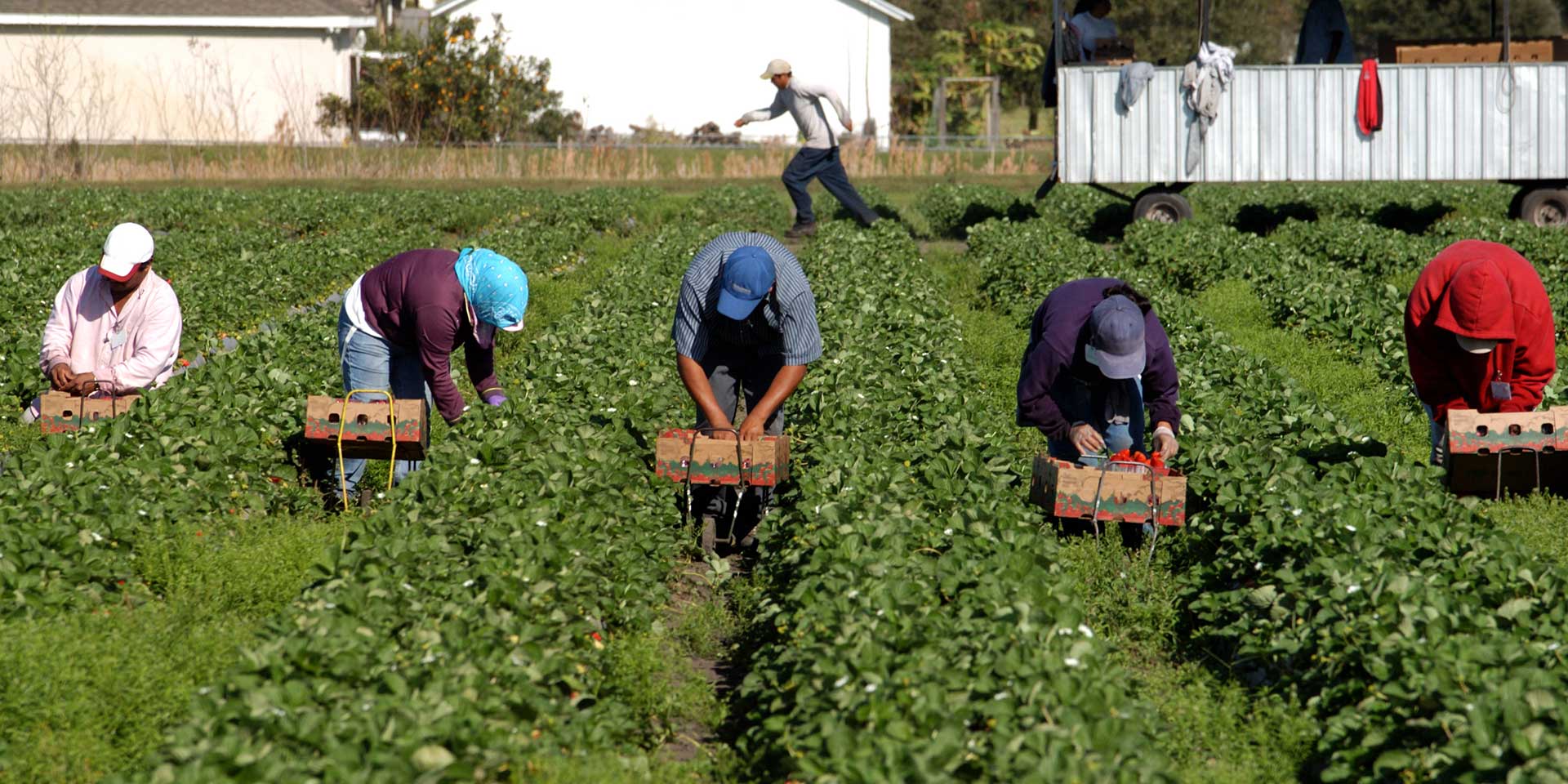Pandemic and Fires Make Food and Farmworkers Even More Vulnerable
Work looks very different for most Americans than it did last Labor Day. While everyone’s lives have been disrupted, the COVID-19 pandemic has illustrated that the victories of the labor movement — especially safe working conditions and fair compensation — aren’t enjoyed equally. Even as the spotlight has shifted towards school reopenings and sports teams, workers in the food system are still some of the most vulnerable to COVID-19. To make matters worse, the summer has brought challenges like fires and extreme heat that only make farmwork more difficult. These dire conditions highlight the importance of continued pushes for better pay and working conditions.
Outbreaks in Meatpacking Continue
The impact of the COVID-19 pandemic on the meat industry was immediate and well-publicized. After multiple outbreaks forced facilities to close, meatpacking executives misled the public by arguing that plants needed to run as normal — unimpeded by social distancing mandates and closures — to avoid a meat shortage that never materialized. While they secured an executive order mandating that plants remain open, public pressure and advocacy from labor groups put a spotlight on the industry. Workers in many facilities gained sick leave and other benefits, and plants installed some social distancing equipment in partial compliance with CDC guidelines.
Even after the spotlight on the industry faded, however, the issues continued. Guidelines issued by the CDC weren’t binding, meaning workplace protections were typically inadequate. Testing access and turnaround times have lagged, making control nearly impossible. Worse still, meatpacking facilities around the country misrepresented the scale of outbreaks and hid data from health agencies to continue operating as normal. As public pressure faded, many companies quietly discontinued their sick leave policies and hazard pay. Experts warn that the discontinuation of these policies is a serious public health risk, as it encourages workers to show up even when ill.
These ongoing failures have a tragic human cost: to date, more than 41,000 meatpacking workers have contracted the virus. Stories of entire communities devastated by a mismanaged outbreak are becoming commonplace, especially in poor rural areas with little access to healthcare. Now, with sick workers still pressured into showing up and cases rising, states are struggling to track new outbreaks. Going beyond voluntary guidelines from OSHA and the CDC, Michigan now mandates testing of all food and farmworkers. Workers in other states are still struggling under piecemeal regulations, however, and this also impacts the communities where workers live: Iowa towns with meatpacking plants are still waiting on additional guidance from health officials on how to limit spread between facilities and newly reopened schools, for example.
Struggles to Contain COVID on the Farm
Farmworkers have also struggled with the poor implementation of COVID-19 guidelines. Those with documentation arrive through the H2-A program, which stipulates workers be provided with housing and transportation to and from the field. Even under normal conditions, these facilities are often cramped, so social distancing is difficult. Some state governments took action by limiting the number of workers that could be housed together and mandating PPE on farms, but outbreaks among H2-A workers continue. These often stem from violations of the new regulations: one large outbreak occurred on a cherry farm in Washington where workers were organized into large groups, used unsanitized equipment, and lacked access to testing and medical care.
Workers who are in the country on H2-A visas may not even be aware of their rights, and may not have the language skills to speak up for themselves in the case of a violation. Even worse, they feel that their employment is tenuous, and fear that speaking up could lose them a coveted position in the visa program. The situation is even more dire for undocumented workers, who don’t have the same protections given to H2-A recipients.
As the West Warms, Farmworkers Feel the Heat First
The COVID-19 pandemic isn’t the only challenge facing farmworkers this year. Dry conditions and record-breaking temperatures induced by climate change have led to an exceptionally destructive fire season. With more than a million acres of land burned in California alone, this is causing serious issues for workers across the West. Fields reach more than 100 degrees by midday, and the smoke from surrounding fires strains workers’ lungs. Although workers have legally-mandated access to shade and water breaks, many are paid by the amount of food they harvest and make so little for every unit that breaks become too expensive. This creates pressure to keep working long hours in spite of air quality and heat warnings to spend as little time outdoors as possible. Even at home, overburdened electrical grids and high utility costs mean that farmworkers in poverty can’t cool off in air conditioning or a cold shower.
Fixing Farm Food and Farm Labor
As farms have failed to provide PPE for workers, local clinics and nonprofits have tried to fill the gaps, with many organizations providing masks and basic medical care. Still, these solutions aren’t enough. Although thousands of N95 masks are being distributed in California, for example, experts say that they should be replaced at least once a day in smoky conditions; this means more than 100,000 masks are needed per day in the Central Valley alone. The only sure way to stay healthy is to spend less time in the field, but neither growers nor farmworkers can afford to miss out on the harvest.
While better enforcement of safety provisions would go a long way to helping keep workers safe, this doesn’t address the fundamental inequities that push workers to keep showing up when jobs lack these protections. This underlying problem is economic: consistently low wages have kept workers in poverty. Not only does poverty force workers into poor living conditions that make them more vulnerable to the virus and other threats, poverty also tilts the scales on the choice between staying healthy and getting a paycheck.
Even a small shift in pay could make a big difference — economists have estimated that lifting farmworkers out of poverty would add only $21 to the average American’s grocery bill. Making that a reality is easier said than done, however.
Historically, farmworkers have been exempted from overtime pay, one of the critical victories of the mainstream labor movement. This policy of agricultural exceptionalism is rooted in racism, and continues to hurt farmworkers — many undocumented and nearly all people of color — today. While New York and California have passed individual legislation for giving farmworkers overtime, this hasn’t gained traction nationwide. Now, a few pushes for overtime pay are gaining traction in light of the pressures farmworkers face from COVID: the Washington State Supreme Court will soon hear a case determining whether farmworkers should have overtime pay.
For other workers in the food system, the pandemic provided a brief glimpse of what fairer compensation might look like as meatpacking facilities introduced sick leave and hazard pay. Although many have since rescinded those benefits, workers at a JBS plant successfully negotiated for a more permanent raise after a union-led walkout. More widespread actions, like the recent civil rights complaint against Tyson and JBS, could go a long way toward forcing meatpackers’ hands-on providing a better working environment.
Top photo by Renar/ Adobe Stock.
More Reading
After season 2 of ‘High on the Hog,’ there is more to be told
March 19, 2024
The 'unseen hands' of the food system
February 27, 2024
Why Black-owned farm acreage shrank 80 percent in 100 years
February 1, 2024
Prison food is a national crisis. Sustainable sourcing could be a solution.
January 16, 2024
Fair trade certifications impede worker organizing, according to new report
December 27, 2023
The importance of traditional Hawaiian food systems after the Lahaina blaze
December 7, 2023
Do you know where your coffee comes from?
October 10, 2023
Colleges have high rates of food insecurity and food waste. Students are helping address both.
October 4, 2023
It’s Been a Big Year for the Labor Movement. What About Farmworkers?
August 31, 2023
Envisioning Indigenous Food Sovereignty as ‘a Whole Ecosystem’
August 24, 2023


